|
|
|
|
|
|
|
After IRANZ’s regular meeting in Wellington on 8 December, 11 members met with the Minister of Research, Science and Innovation, the Hon. Dr Megan Woods in the Beehive to discuss Te Ara Paerangi Future Pathways Green Paper. Other IRANZ members joined the meeting via Zoom.
Dr Woods recognised IROs as a key part of New Zealand’s science ecosystem, with their strong links to industry and other users. She reiterated that the Future Pathways paper is about genuine consultation on how to restructure the public science system to address issues of fragmentation, unproductive competition, and inability to adapt to changing national needs. She said that the system suited the 1990s when it was created, but now is no longer reflective of the needs of the 'Team of Five Million'.
She said they are keen to hear from people across the science spectrum and that submissions are welcome from individuals as well as organisations. "We want to hear from people at the coal face as well as CEOs of research organisations."
MORE →
|
|
|
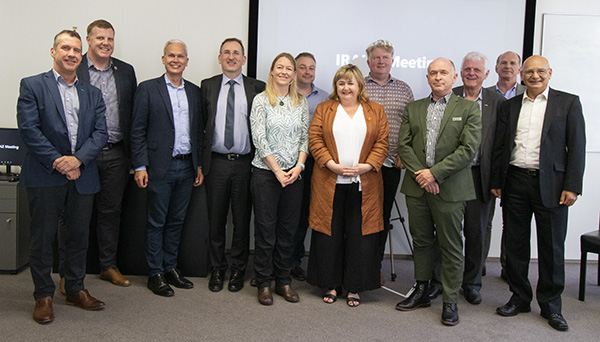 |
| IRANZ members from around Aotearoa New Zealand gathered in Wellington on 8 December to discuss the Government’s recently released Future Pathways Green Paper. The day finished with a discussion with the Hon. Dr Megan Woods, Minister for Science, on the future of this country's science system. Photo: Louise Thomas. |
|
|
|
|
|
- Mātai’s Samantha Holdsworth promoted to Associate Professor
- Parkinson’s New Zealand recognises Brain Research Clinical Director Tim Anderson
- Malaghan’s Dr Kerry Hilligan recipient of Rutherford Foundation Postdoctoral Fellowship
- Professor Mike Berridge wins the Shorland Medal
- Te Tira Whakamātaki’s Melanie Mark-Shadbolt nominated as a 'Women of Influence' finalist
- Dr Charles Berde keynote speaker for 78th Annual Thomas Cawthron Memorial Lecture
- Matai research intern Erana Hogarth awarded a Māori Entrance Scholarship for academic excellence from the University of Otago
- Justine Lee of the University of Canterbury awarded Motu’s Sir Frank Holmes prize
- . . . and more.
Follow the link for more details on the December 2021 news briefs from our Independent Research Organisations.
MORE →
|
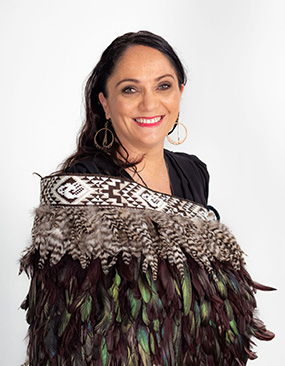
| Melanie Mark-Shadbolt, Deputy Secretary Māori Rights & Interests at the Ministry for the Environment and founder of Te Tira Whakamātaki, has been nominated as a 'Women of Influence' finalist in the Public Policy category for 2021. |
|
|
|
|
|
|
A ground-breaking discovery from the Malaghan Institute has shone a light on immune cells in the skin, suggesting they play a much larger role in the onset of allergies than first thought.
The discovery throws into question the long-held belief that immune cells behave in the same way, regardless of where they are in the body, which has far-reaching implications for allergic and inflammatory conditions.
The paper ‘Homeostatic IL-13 in healthy skin directs dendritic cell differentiation to promote Th2 and inhibit Th17 cell polarization,’ published in Nature Immunology has found that dendritic cells in the skin behave differently than their counterparts elsewhere in the body. This finding, the cumulation of several years of research supported by the Health Research Council of New Zealand, thoroughly challenges the established perception of how these key immune cells behave.
MORE →
|
|
|
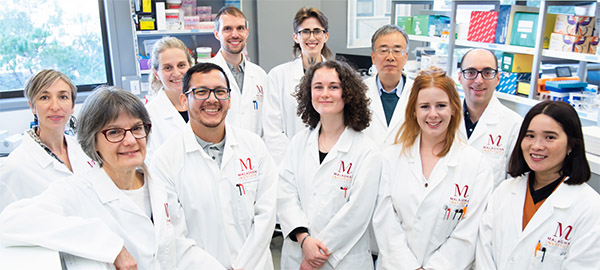 |
| The Immune Cell Biology team. Image: Malaghan Institute. |
|
|
|
|
|

|
Image: Mark Stebnicki, Pexels. |
|
A study from the Malaghan Institute of Medical Research has found that a high fibre diet can improve the immune response to the first dose of a vaccine.
Published in Frontiers in Immunology, the finding has implications for how we might tailor our diets to stimulate the best protective effect from novel vaccines.
The study, funded by High Value Nutrition Ko Ngā Kai Whai Painga National Science Challenge, investigated immune responses to the influenza vaccine. Participants were asked to report on their diets, with samples of their gut microbiome tested to understand which types of bacteria were prevalent prior to vaccination. After being given the influenza vaccine, participants’ blood was then analysed to assess the resulting antibodies they produced and determine how responsive their immune system was to the vaccine.
MORE →
|
|
|
|
|
|
Motu research fellow Phoebe Taptiklis co-authored a blog in Otago University's Public Health Expert outlining basic principles of using air purifiers to reduce the risk of Covid-19 transmission.
Indoor environments increase the risk of transmission for the virus that causes Covid-19 (SARS-CoV-2) by containment and concentration of the airborne virus. However, to reduce such transmission, the particles that carry the virus can be diluted by bringing in as much outdoor air as possible. When good ventilation is not possible, air purifiers can be used as an additional preventative measure to reduce the number of virus-laden particles.
And ventilation and purification of indoor air needs to be used alongside public health measures, such as vaccination, staying home when unwell, and mask use.
The blog outlines some basic principles of using air purifiers, such as filter types and room placement, to reduce the risk of Covid-19 transmission.
MORE →
|
|
|
|
|
|
|
|
A new paper from Motu Research shows successive New Zealand Governments have failed to keep human rights promises that all New Zealanders will have the basic levels of housing, health care, and protection in Aotearoa New Zealand.
The paper says successive New Zealand Governments have not sufficiently prioritised human rights that were agreed to in international human rights treaties.
The paper helps to identify where resources are most urgently needed to ensure all Kiwis have the right to adequate housing — and the right to health care and protection.
Motu Research Analyst and lead paper author Livvy Mitchell says more people are becoming homeless in our country, with the number of people living in cold, damp, and mouldy homes also increasing. At the same time housing is becoming more and more unaffordable.
MORE →
|

| Photo: Andrew Seaman, Unsplash. |
|
|
|
|
|
|
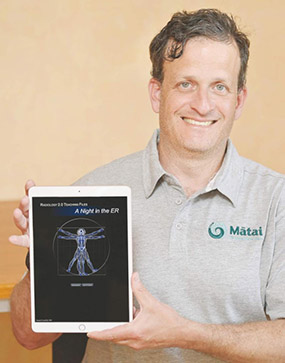
|
Matāi Medical Research Institute clinical lead Dr Daniel Cornfeld's teaching app Radiology 2.0 A Night in the ER is a 'Minnies' semi-finalist for the Best Educational Mobile App of the year. Photo: Liam Clayton. |
|
“A Night in the ER” has the ring of any number of popular medical television dramas. But it is the name of a teaching file in an app developed by Matāi Medical Research Institute clinical lead Dr Daniel Cornfeld which has gained recognition on a global platform. Reporter Akula Sharma writes about the app in this Gisborne Herald article.
The ER teaching file has reached the semifinals in the Minnies, awards given out each year by AuntMinnie.com, a site for radiologists and related professionals in the medical imaging industry. Dr Cornfeld said he was very grateful for the global recognition on AuntMinnie.com.
“Every year they give awards for best teaching apps and research. This year Radiology 2.0: A Night in the ER teaching file got into the semi-finals, which was really surprising for me, because the first draft was written in 2011. It wasn't an app back then, it was a computer-based learning module. Later on it got developed into an app and now it's 2021 — after ten years, it's nice that I got noticed.”
MORE →
|
|
|
|
|
|
Holly Walker, Deputy Director of the Helen Clark Foundation and WSP Fellow, writes about why transport matters for equity, and how Aotearoa New Zealand can fairly transition to the connected low-traffic cities we need for a decarbonised future.
Aotearoa New Zealand has one of the highest rates of car ownership in the OECD, with 83 percent of travel time spent in cars. With the population in cities set to increase by almost one million by 2048, it is rapidly becoming unviable for cars to be used as the main mode of urban transport.
Our current, car-dominated transport system limits mobility and opportunities for thousands of people and accounts for about 43 per cent of domestic carbon emissions. It also kills or injures thousands of people each year, undermines public health, creates harmful air and noise pollution, and is detrimental to our collective mental wellbeing.
Sweeping changes to Aotearoa New Zealand’s transport system are needed if the country is to have any hope of meeting its net zero target.
MORE →
|

| Te Ara Matatika The Fair Path, the latest report from WSP and The Helen Clark Foundation, suggests several bold interventions, including reprogramming the transport system around the twin goals of reducing car dependence and improving equity. Image: WSP. |
|
|
|
|
|
|
Around the world, local authorities are grappling with a host of challenges, including transport and health inequities, climate change, and congested streets and roads. Aotearoa New Zealand is not immune to these challenges, and researchers and planners at WSP have been considering innovative approaches to urban design and reducing transport emissions to enable us to meet reduction targets set out by the Climate Change Commission.
Recent work considers the 20-Minute City - where all the things that contribute to living a good life are within a 20-minute walk, cycle or quick public transport trip. “Your home, work, essential services, public amenities and favourite hospitality and retail haunts are just a stone’s throw away.”
20-Minute cities are a response to rising transport emissions and sprawling urban regions where long-suffering commuters sit in heavy traffic or spend hours on public transport getting to and from work. “They also nicely respond to transport, health and housing inequities, and bring communities closer together.”
Another recent WSP paper, Where our thinking needs to be to reduce transport emissions, says there is a pattern of vehicle ownership that we need to move away from. “Societal behaviours are shifting to where driving alone isn’t the first or easiest, most convenient way to move around. This can be achieved through travel behaviour change initiatives and by engaging with people from all walks of life.”
Research has shown that promoting recreational cycling increases the likelihood of a person considering it as an option for travel to work.
Read the research
The 20-Minute City: An equitable solution
Where our thinking needs to be to reduce transport emissions
|
|
|
 |
| New research from WSP says we need ambitious national and local targets to encourage people to use shared and active modes of transport. Photo: WSP. |
|
|
|
|
|
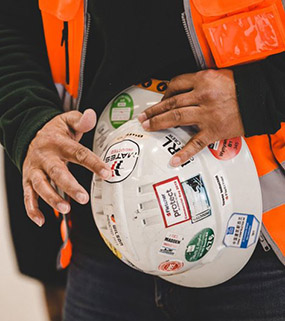
|
New BRANZ/Otago University research has revealed that New Zealand’s construction workers are more than two times more likely to die by suicide than the rest of the workforce. The research has been commissioned by suicide prevention and support programme MATES in Construction (MATES) and funded by the Building Research Levy.
“What this new research shows is that we may have been undercounting the number of suicides in the industry by excluding occupational categories that actually belong in our industry. This information will help to offer more targeted support as we now have a more detailed picture of the scale and who is affected,” says MATES CEO Victoria McArthur.
MORE →
|
|
|
|
|
|
BRANZ has co-designed a framework to help territorial authorities confidently and robustly make decisions on managing earthquake-prone council buildings that are in the best interests of their communities.
Since the Kaikōura and Christchurch earthquakes, new legislation has led to many earthquake-prone buildings sitting empty, resulting in community facilities and services being suspended. In response to the Building (Earthquake-prone Buildings) Amendment Act 2016 and the introduction of the new building standard (NBS) as a metric for seismic performance, some territorial authorities have since rapidly closed buildings with NBS ratings of less than 34%, pending their remediation or demolition.
When public buildings close, communities go without spaces to meet, socialise and access services, sometimes leading to negative impacts on social and economic wellbeing. Without clear, documented policy on building closure that considers all the risk factors, it is difficult for decision makers to explain the rationale and gain community buy-in for their decisions.
MORE →
|
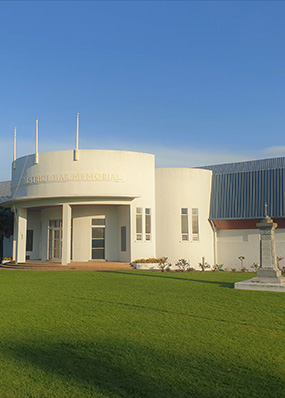
| BRANZ led a Levy-funded research project, working with collaborators and territorial authorities, to understand how engineering advice and community impacts translate to public policy decisions about earthquake-prone council buildings. Earthquake-prone Whakatāne District War Memorial. Photo: Whakatāne District Council. |
|
|
|
|
|
|
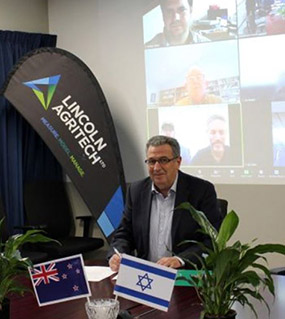
|
Lincoln Agritech CEO Dr Peter Barrowclough. Image: Lincoln Agritech. |
|
A non-invasive ground-penetrating radar technology, developed by Lincoln Agritech, that can measure soil moisture in real-time while travelling around on a centre pivot, has been licensed to an Israeli company - Autonomous Pivot.
Trials in the US have allowed farmers to use 25% less water without a loss in yield.
The technology was developed from a "Smart Idea" funded by the Ministry of Business, Innovation and Employment, and developed by Ian Woodhead, and Lincoln Agritech electromagnetic team members Adrian Tan and Ian Platt.
CEO Dr Peter Barrowclough says they are very proud that a New Zealand research organisation can make such a difference to the world.
Peter was interviewed on NewsTalk ZB about the deal.
MORE →
|
|
|
|
|
|
Lincoln Agritech has recently been awarded $8.3M from the New Zealand Ministry of Business Innovation and Employment (MBIE) Endeavour Fund for a five-year research programme aiming to develop novel cellulose fibres regenerated from New Zealand plant resources for textile use.
The research collaborators in the programme, led by Lincoln Agritech Ltd, include The Ferrier Institute, SCION, and AgResearch. The aim is to develop the basis for a new industry exporting a substantial volume of regenerated cellulose fibres derived from dedicated plantations. It is further intended to divert current streams of lower value or waste cellulose material and foster the development of high-end textiles made by New Zealand designers.
The unique fibre wet-spinning expertise at Lincoln Agritech has been developed through a partnership programme funded by Wool Industry Research Limited (WIRL) and MBIE, to develop new uses for crossbred wool.
MORE →
|

|
|
|
|
|
|
|
An international research team, which included scientists from Australia and the US, has documented that coastal infrastructure has already replaced more than half of the coastline in the areas studied. Coastal marine habitats are extremely important to ocean health, but researchers at New Zealand’s Cawthron Institute are warning that the global phenomenon of ‘coastal hardening’ caused by urbanisation and industry in coastal areas is putting them under threat.
Cawthron marine scientist Oliver Floerl lead authored a new paper published in the prestigious scientific journal ‘Nature Sustainability’, which outlines the threat posed by this challenge.
The team mapped coastal infrastructure like ports, wharves, marinas, and seawalls in 30 urban centres around the world, including in the UK, the US, and New Zealand.
"When we replace natural habitats with artificial ones, we impact the species that live there, damage the ecosystem, and make our shores vulnerable to invasive marine pest species.”
MORE →
|
|
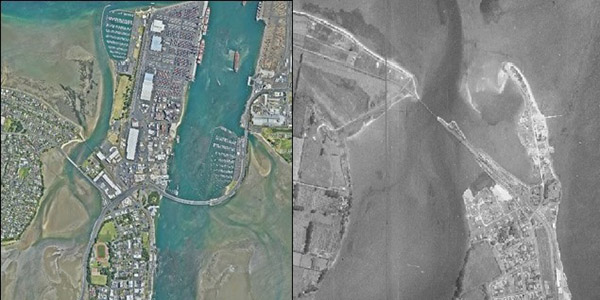 |
| Aerial images of Tauranga in 2018 (left) and 1943 (right) demonstrate the extent of coastal hardening. Image: Cawthron Institute. |
|
|
|
|
|
A short film weaving together oral history, science, and matauranga Māori showcases the work Rangitīkei iwi are doing to revitalise the health of Lake Oporoa. Alongside GNS Science and the Cawthron Institute, Rangitīkei iwi are building a picture of over a thousand years of the lake’s history.
Whakahokia te mauri o Oporoa is a short film that celebrates the commitment of Rangitīkei iwi to enhancing the mauri (life force) and ecological health of Lake Oporoa, a relatively unknown lake in the Rangītikei catchment near Taihape. The film draws from Māori oral history, scientific insights, and childhood memories of Lake Oporoa.
The collaboration of iwi and scientists is part of a nationwide project called Our lakes’ health – past, present, future (‘Lakes380’) jointly led by the Cawthron Institute and GNS Science.
MORE →
|
|
|
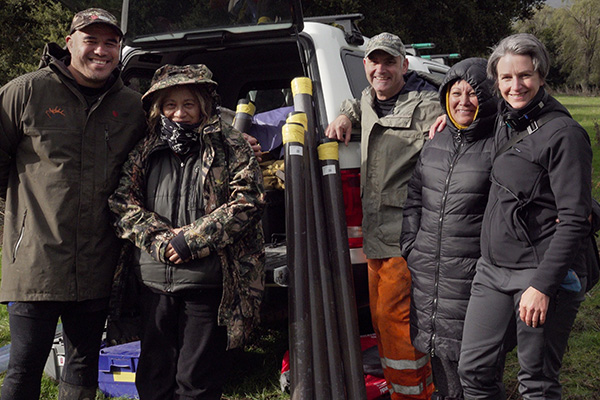 |
| Ngā Puna Rau o Rangitīkei representatives with Lakes380 researchers. Image: Horizons Regional Council. |
|
|
|
|
|
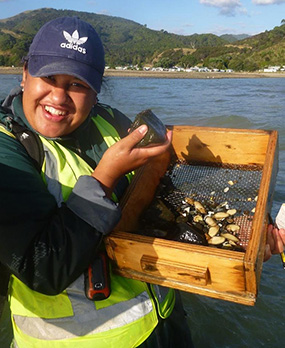
|
Tyla Hill-Moana, an early-career scientist at Dragonfly, assists with surveying pipi and cockle populations at Te Mata beach. Photo: Dragonfly Data Science. |
|
A new contract with Fisheries New Zealand will see Dragonfly Data Science's work surveying pipi and cockle populations across northern North Island beaches continue for another three years.
Katrin Berkenbusch has been leading the surveys for the past eight years, supported by a team of field assistants and local helpers.
Two new monitoring sites were added last summer, prompted by concerns about declining numbers of the bivalves. One new site was in Hokianga Harbour in Northland. The other was on the west coast of Coromandel Peninsula, at Te Mata and Waipatukahu. Here, a rāhui currently bans all shellfish collection.
“At the new sites, we worked closely with iwi to find out where suitable sampling areas would be. It’s quite a challenge, because the sites have to be easily accessible at a normal low tide and in an area that’s targeted by fishing. That’s because this monitoring is focused on how the fished beds are faring rather than studying the total population.”
MORE →
|
|
|
|
|
|
Modelling carried out by Dragonfly Data Science for the Department of Conservation shows that the Antipodean albatross population is declining at five per cent per year. This species is classified as Nationally Critical. The results also indicate that many threats are working together to cause the serious population decline. This suggests that a more holistic approach to conservation at sea is required to safeguard the future of the species.
Using data collected by DOC scientists Kath Walker and Graeme Elliott, and Bayesian statistics, the team at Dragonfly developed a model and simulation tool to predict the effect of different management strategies on the species. This will help guide decisions to halt the decline and secure their future.
Antipodean albatross only breed on the isolated Antipodes Island. Their population has declined by two thirds in the last 15 years from about 16,000 to 6,000 breeding birds.
The major threat to the population is thought to be accidental capture by longline fishing vessels outside New Zealand waters.
MORE →
|
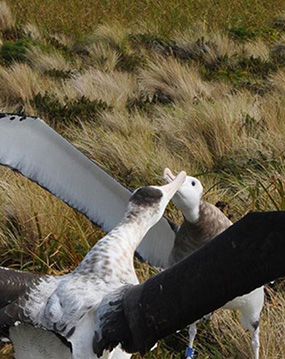
| Antipodean albatross inside the study area. Antipodean albatross fly across the world but only breed on the isolated Antipodes Island, 750 km southeast of New Zealand. Their population has declined by two thirds in the last 15 years from about 16,000 to 6,000 breeding birds. Each season birds leave the island but some, especially females, fail to return. Photo: Kath Walker, DOC. |
|
|
|
|
|
|

| Image: Michael Dziedzic, Unsplash. |
|
PlantTech’s research strategy involves using information for insights and data-driven decision-making in New Zealand's horticulture industry. Over the coming year the research team will focus on three specific areas - Proximal Sensing; Remote Sensing; and Environmental DNA and Ecosystems.
Proximal Sensing is gathering data in close proximity to the plant, be it images, soil samples, or weather data. Among other things, this helps with yield prediction, and understanding a crop’s health and nutrition status.
Remote Sensing uses technologies such as drones, aerial surveying, and satellite imagery. The areas investigated span plant health and nutrition, productivity and performance, and biodiversity and disease surveillance, amongst others.
Environmental DNA and Ecosystems involves a new generation of genetic sensing technologies that can provide deep insights into the organisms present in an environment.
MORE →
|
|
|
|
|
|
Scientists from Tauranga’s PlantTech Research Institute have already started work on an airborne remote sensor project, after the company were successful in two research bids to the Government's Endeavour Fund.
PlantTech are leading a two-year international project, that will use airborne remote sensors to discover what is causing plant stress in kiwifruit orchards, thanks to $1 million in Endeavour funding.
Another Government-funded project, led by Scion, Seeing the forest for the trees: transforming tree phenotyping for future forests, involves using PlantTech’s capability in hyperspectral imagery analysis to support research that will identify the best genotype to plant in different environments for commercial production and indigenous uses.
MORE →
|
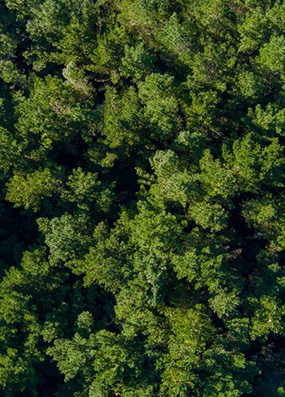
|
|
|
|
|
|

|
A recently published HERA report says Industry 4.0 is driving an unprecedented transformation across global industry, as new technologies promise to save time, boost productivity, reduce waste, expand business models, and allow businesses to be more responsive to fast-changing environments and consumer demands.
"While companies have the opportunity to position themselves at the forefront of this new Industry 4.0 wave, they can struggle to understand the economic benefits of doing so," writes HERA CEO Dr Troy Coyle.
Troy says the latest report in collaboration with BERL, modelling the potential economic impacts of Industry 4.0 in New Zealand, uses high-level CGE modelling to analyse the impact over the next five years.
"The modelling suggests that the economic gains are likely to be significant."
MORE →
|
|
|
|
|
|
A collaboration between the New Zealand Brain Research Institute and University of Canterbury researcher, Dr Catherine Theys, has recently received a research grant from Canterbury Medical Research Foundation to investigate, for the first time, how stuttering therapy changes brain function in children who stutter. With these findings, they aim to improve treatment, and have a positive impact on the lives of the 80 million people who kikikiki/stutter and their whānau worldwide.
At least one in twenty pre-schoolers in Aotearoa New Zealand develops stuttering. While many recover, spontaneously or with early speech-language therapy, a significant proportion do not. For the 1% of the population with persistent stuttering, there is currently no cure. Treatments are demanding and effects are often not maintained.
MORE →
|
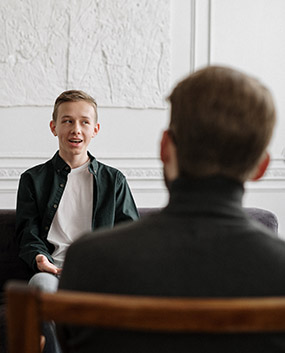
| Communicating effectively with others is essential for a person’s hauora (physical, emotional, social and spiritual wellbeing). For those who stutter or kikikiki, everyday communication is a struggle. |
|
|
|
|
|
|
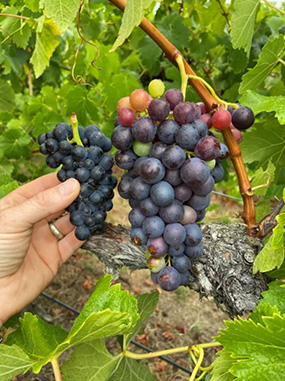
| A harvest time comparison between Pinot Noir, left, and Trollinger, right. Photo: Sam Woods, Monte Christo. |
|
The Central Otago region is steeped in viticultural history. Some of the first grapes were planted more than 150 years ago by French immigrant Jean Desire Feraud on his property near Clyde. A goldminer by trade, Feraud benefited from his winemaking heritage to create the Monte Christo Winery.
Now, with molecular testing, Bragato Research Institute has confirmed Feraud’s legacy lives on through a recently identified Trollinger vine at the present-day Monte Christo Winery. The Trollinger vine has links back to Italy and Germany.
Viticulturist Sam Woods has been with Monte Christo since July last year, assisting the new property owners with their efforts to restore the winery to its former glory.
"Part of my research has involved working with Darrell at the Bragato Research Institute to identify some of the old, established grapevines on the Monte Christo property." Sam says it has been an interesting process.
MORE →
|
|
|
|
|
|
While clinicians and researchers worldwide have been looking closely at all aspects of COVID-19, the majority of data has been limited to patients admitted to hospital and intensive care units. This has provided insights in severe COVID, but leaves out those with less-severe disease. New Aotearoa New Zealand research published on 17 September has sought to redress the balance.
The Medical Research Institute of New Zealand (MRINZ) COVID team, led by Dr Nethmi Kearns, Clinical Research Fellow, working in partnership with Regional Public Health (RPH), have analysed data on the progression, prognosis, and management of the 2020 alpha strain of all community COVID-19 cases in the Greater Wellington region.
MORE →
|

| Dr Nethmi Kearns, MRINZ Clinical Research Fellow.
Photo: Rebecca McMillan. |
|
|
|
|
|
|

| Neodymium, a high-value REE found in the West Coast's mineral sand deposits. |
|
The West Coast’s mineral-rich, black sands are yielding encouraging levels of enrichment in rare earth elements (REEs), including within minerals not normally associated with them, such as epidote, ilmenite, and zircon. The New Zealand Institute for Minerals to Materials Research's (NZIMMR) search for REEs is extending to mineral sands, and elsewhere in New Zealand.
Neodymium, dysprosium and lanthanum are among the high-value REEs found in West Coast mineral sand deposits, starting a conversation on how to make their recovery economic. NZIMMR is increasing the visibility of these green-tech metals, to spark renewed interest in them. The Government wants to encourage an REE-based industry in New Zealand. Among questions are where they occur in potentially economic quantities, and how to reduce the cost and environmental impacts of separating them from other minerals to produce concentrates.
MORE →
|
|
|
|
|
|
On 10 December, the Bragato Research Institute announced a partnership with government to work on a Sauvignon Blanc Grapevine Improvement Programme. The research programme will develop new variants of New Zealand’s premier wine varietal, Sauvignon Blanc, to make the wine industry both more resilient and more sustainable - more resilient by identifying traits such as drought and frost resistance, and more sustainable by seeking natural resistance to pests and diseases.
“The New Zealand wine industry has a substantial track record of coming together to create large R&D projects for the benefit of the industry as a whole. This will be the first national grapevine improvement programme in the country,” says Bragato CEO, Jeffrey Clarke.
MORE →
|
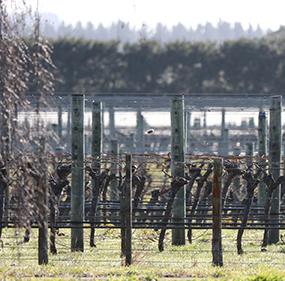
| Bragato will create up to 20,000 entirely new variants of contemporary New Zealand Sauvignon Blanc, and then screen them to identify plants that exhibit the most useful traits. Photo: Louise Thomas. |
|
|
|
|
|
|
|
The Speaker’s Science Forum event on Aotearoa New Zealand’s 'Place in Space' at the end of October was the last of this year’s series, aimed to present cutting edge and informative research to MPs and decision makers at Parliament.
The theme this month was space and MPs and invited guests shared a meal while listening to talks from two passionate scientists: Dr Sarah Kessans, University of Canterbury, spoke about launching small satellites into space for research purposes, making use of reduced gravity, while Dr Dave Kelbe, Xerra Earth Observation Institute, spoke about using satellite data to better protect our oceans and support the people who rely on them.
Dave says that data from satellite sensors can be turned into operational intelligence for the country's maritime domain awareness needs across many sectors.
“Spacecraft launches are growing at an exponential rate. The diversification of space sensors (optical, radar, radio frequency, GPS, weather) has ushered in a new era of software as a service solutions, reducing the barrier to entry for non specialist users. The challenge now is that there is too much information. Across border security, biosecurity, and fisheries monitoring control and surveillance, search and rescue, public health, and policy - the problem is always the same - seeing through the chaos and focusing on the activity and vessels that matter.”
MORE →
|
|
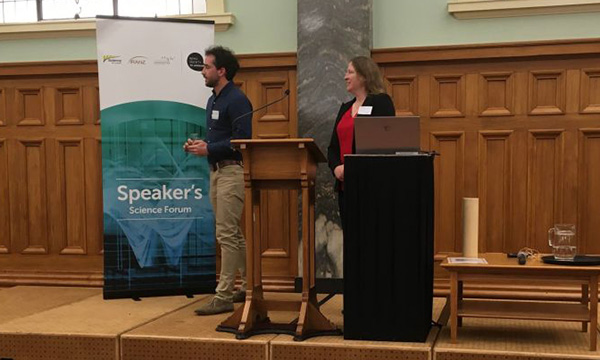 |
| Dr Sarah Kessans, University of Canterbury, spoke about launching small satellites into space for research purposes, making use of reduced gravity, while Dr Dave Kelbe (left), Xerra Earth Observation Institute, spoke about using satellite data for maritime surveillance. Photo: Royal Society Te Apārangi. |
|
|
|
|
|
IRANZ has gone social. For up-to-date information about the activities of our member organisations and same-day notification of updates to the website follow us on the link below.
FACEBOOK FOLLOW HERE →
LINKEDIN FOLLOW HERE →
|

|
|
|
|
|
|
|
|
WHO WE ARE
IRANZ is an association of independent research organisations. Its members undertake scientific research, development or technology transfer. Members include Aqualinc Research Ltd, Bragato Research Institute, BRANZ, Cawthron Institute, Dragonfly Data Science, Heavy Engineering Research Association (HERA), Land & Water Science, Leather & Shoe Research Association (LASRA), Lincoln Agritech Ltd, Mackie Research, Malaghan Institute of Medical Research, Medical Research Institute of New Zealand (MRINZ), Mātai Medical Research, M.E Research, Motu Economic and Public Policy Research, New Zealand Brain Research Institute, New Zealand Institute of Minerals to Materials Research, PlantTech Research Institute, Takarangi Research Group,
Te Tira Whakāmataki, Titanium Industry Development Association Ltd (TiDA Ltd), Verum Group, WSP, and Xerra Earth Observation Institute.
|
|
Contact: Dr Rob Whitney, Executive Officer, mobile: +64 27 2921050, email: information@iranz.org.nz
|
| Copyright © iranz |
|
|
|
|
|